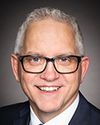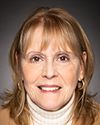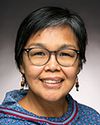Madam Chair, Chief Elmer and distinguished members of Parliament, hello.
[Witness spoke in Cree]
[English]
How are you my friends? My name is Shannon. I was born in Edmonton. I studied at the University of Alberta, and I understand a little bit of Cree.
It's important for me to introduce myself in Cree, because it is the language of my ancestors and because my mother is a residential school survivor.
My mom was taken when she was five years old and endured physical abuse, mental abuse and emotional abuse. She lost the hearing in her right ear when she was very small from something that a nun did to her. My mother is now 85 years old, and she suffers from something called post-traumatic stress disorder. PTSD is usually something that first responders or soldiers might have when they get exposed to too much trauma. It should never be something that children have when they are returning from school.
My mother will never recover from the events at residential school, but that is part of my healing journey. I have to do the healing for her. That is how you break the cycle of intergenerational trauma so that cycle doesn't carry forward into the lives of my children.
Wahkohtowin is a word in Cree that means we are all related. I feel that is the only way we can move forward into the future, by treating each other with the respect and love that we have for family.
We have positive role models today, like Governor General Mary Simon, MP Idlout, Dr. James Makokis and scholars like Dr. Chris Andersen and Dr. Billy-Ray Belcourt. They are all contributing to this new world of indigeneity, where there are strong, educated, positive individuals.
What we need to do, though, is to have this open and positive dialogue with all of our non-indigenous communities and allies so that we can all start to heal from some of these intergenerational traumas.
Wahkohtowin—if we're all related, then I hope that all of you can empathize with the need for more financial supports to indigenous students, modified terms of reference for the indigenous skills and employment training program and less systemic racism within our post-secondary institutions.
That is what I am here to discuss today as the co-chair of the national indigenous advocacy committee of the Canadian Alliance of Student Associations. I'm passionate about how indigenous students can be better supported in post-secondary education. There are many gaps and barriers for indigenous students accessing higher education.
In my own experience as an indigenous student, my band funding was denied. They explained to me that they could only afford to fund 15 high school students. As a mature student, I didn't qualify for any of that. I was then redirected to the Freehorse Family Wellness Society, and I was receiving funding from their post-secondary fund. I also had to apply to the Canada student loans program. For me, there is no such thing as a free education. That is a myth that is perpetuated in Canadian society. It doesn't exist.
My story is only one of many indigenous students who struggle to secure funding for their post-secondary education. In order to reduce these barriers for students, I'm asking this committee to consider the following.
Increase funding to the post-secondary student support program, known as PSSSP. This program is a major source of funding for indigenous students. However, because indigenous youth are one of the fastest-growing demographics, the program doesn't have enough funding to meet the demand.
We're also asking that the government modify the terms of reference for the indigenous student employment training agreements, known as the ISET agreements, to remove ties to funding post-secondary education to labour market outcomes. Since these agreements and their funding are tied to labour market outcomes, this limits the funding for certain educational programs that are deemed less than beneficial for the labour market. It therefore compromises the availability of programs for indigenous learners and violates indigenous treaty rights established in the numbered treaties.
If we want indigenous students to thrive, we also need their communities and their culture to thrive. We need to ensure that they can access post-secondary education and freely choose their programs of study.
I ask this committee to remember that we are all related. Improvement for one is an improvement for all.
I will happily take your questions.
Hay-hay.





